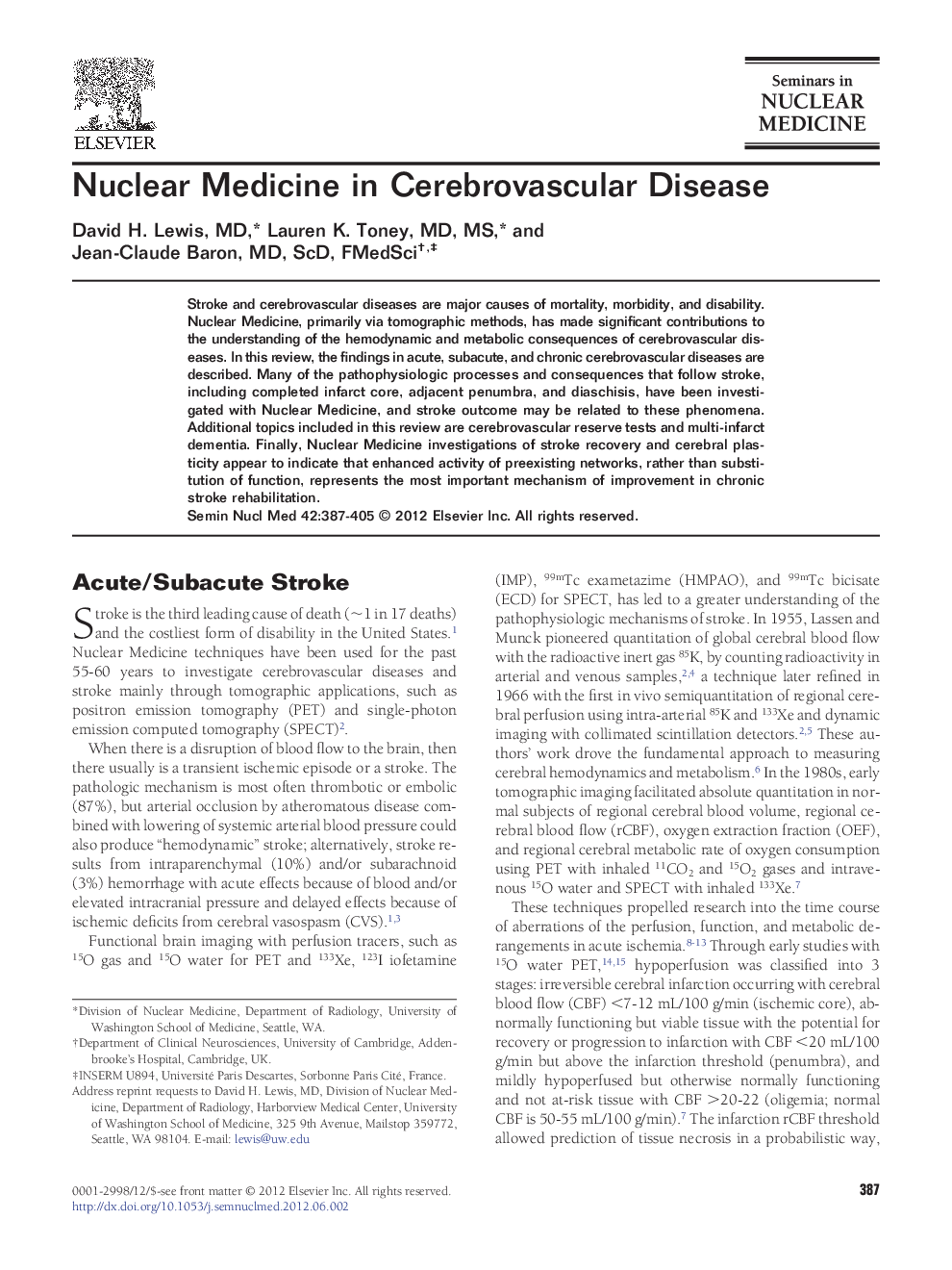| Article ID | Journal | Published Year | Pages | File Type |
|---|---|---|---|---|
| 4251044 | Seminars in Nuclear Medicine | 2012 | 19 Pages |
Stroke and cerebrovascular diseases are major causes of mortality, morbidity, and disability. Nuclear Medicine, primarily via tomographic methods, has made significant contributions to the understanding of the hemodynamic and metabolic consequences of cerebrovascular diseases. In this review, the findings in acute, subacute, and chronic cerebrovascular diseases are described. Many of the pathophysiologic processes and consequences that follow stroke, including completed infarct core, adjacent penumbra, and diaschisis, have been investigated with Nuclear Medicine, and stroke outcome may be related to these phenomena. Additional topics included in this review are cerebrovascular reserve tests and multi-infarct dementia. Finally, Nuclear Medicine investigations of stroke recovery and cerebral plasticity appear to indicate that enhanced activity of preexisting networks, rather than substitution of function, represents the most important mechanism of improvement in chronic stroke rehabilitation.
